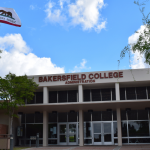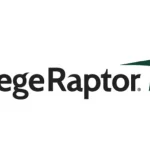Artificial Intelligence – AI for short – is a term we hear literally all of the time these days. But the term is often misunderstood…and it can be overhyped. It’s useful to keep in mind what it really is, how it works and its practical applications.
Whether it is powering virtual assistants or self-driving cars, AI has two general requirements: 1) a lot of data to learn from and 2) people that make sure it is learning the right things from the data.
Here is how we pursue both requirements at Ocelot:
Requirement #1: The Benefit of “Big Data”
Ocelot takes a big data approach to building AI powered tools. The backend of the Ocelot platform is powered by a combination of natural language processing (the process of organizing language into structured data), natural language understanding (teaching machines reading comprehension) and deep learning and neural networks (understanding relationships in data). It is backed by a combination of proprietary Ocelot technology and IBM’s Watson platform.
By taking a big data approach, Ocelot’s AI is based on over five million (and rising!) student interactions and hundred thousand questions across our entire network of schools. Individual schools do not need to build their own dataset or supervise their own AI. Instead, the AI for each school is learning and training from all student interactions across the entire Ocelot network. The “intents” and “entities” are built from datasets that are much larger than what a single school can offer.
This workflow allows Ocelot’s platform to have more impactful conversations with students that can range from admissions and registration to student life and housing. In other words – Ocelot does the heavy lifting when it comes to managing the technology and building the AI algorithms, so clients can focus on creating the most impactful content for their students.
Requirement #2: AI Conversation Design Team
At Ocelot, in order to ensure that our AI is “learning the right things from the data”, we rely, in part, on our AI Conversation Design Team. This team consists of data scientists, content creators, and conversation design experts which takes a unique approach to making our AI-powered platforms, including our chatbots, live chat, and SMS campaigns tools smarter over time.
Additionally, Ocelot has a Compliance and Content Review Committee that has over 75 years of higher education experience that helps ensure that specific general content stays up-to-date with the latest regulations and higher education trends.
AI’s Key Components (AI Model + Technology)
Ocelot’s approach to AI includes:
Knowledge Base: The team improves the knowledge base by creating new content libraries which naturally expands the topics our platform can converse on without any additional training from our clients. Our team regularly mines conversations across our entire network, identifies potential gaps and develops a roadmap for new content development. Finally, Ocelot’s development team is regularly creating conversational design features that allow for more complex and sophisticated dialog building.
Intents: The platform’s ability to understand a user’s intent is based on how well the AI algorithms are trained. The team measures precision/recall, transfers learnings from millions of interactions and manages multiple analytical models. The team also often collaborates with clients to build examples to make sure we are capturing the different ways users are communicating with the platform.
Entities: The team manages entity developments, and finds the right balance between entities and intents. This process also includes creating new domain specific entities, ensuring our AI understands misspellings, “text speak” and abbreviations.
Dialog: Finally, the team oversees how user dialogs are flowing. They are looking to make sure the platform has sound dialog logic and understands what causes users to abandon a conversation with a chatbot. The team also makes sure we have a sound workflow between classification and prediction.
Client Input: For clients that want to improve the content of their knowledge base, they have the ability to add new questions and answers as well as the ability to modify existing content. To assist with this process, the Ocelot platform has a robust analytics page that shows clients where content opportunities exist.
Keeping Things Simple for Colleges
The Ocelot team does most of the AI training and development behind the scenes so that clients do not need the technical knowledge or machine learning expertise needed to make a chatbot (or larger student engagement platform). New and existing clients get the benefit of all this training over the largest chatbot network with the highest number of interactions in higher education. The quality of our highly trained AI comes through in students’ experiences with our platform. And for those clients looking to go the extra mile, each one has the ability to review its chat and interaction logs to identify trends or improvements that can be made to its knowledge base.
The Wrap: Understanding the Value that “AI” Brings to Virtual Student Support
Ocelot’s platform uses artificial intelligence to understand a user’s question, and provides immediate answers. The AI is trained to understand natural language. From a student’s perspective, they do not need to click and look for answers. They can simply ask a question as they normally would, and the AI delivers an intuitive response based on one or more combinations of sources. As institution’s seek tools to support students “virtually”, AI can provide opportunities to scale communications in ways that drive greater engagement than were available previously. Understanding how AI works is the first step to understanding how it can help your students.















